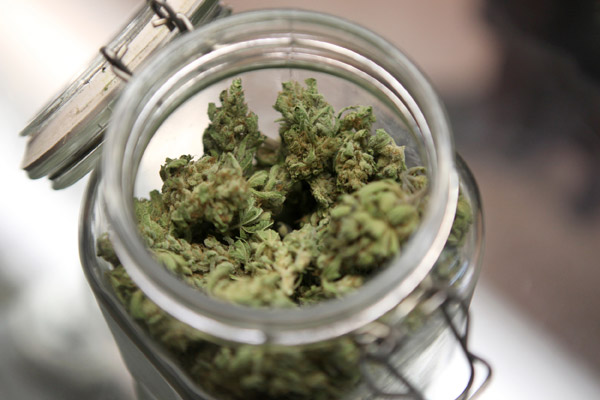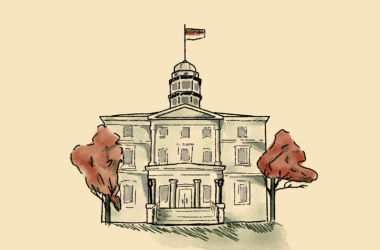Subsidizing legal producers of cannabis may seem outlandish, but it might be the solution to bringing the Trudeau government closer to its goal of “keeping marijuana out of the hands of children, and the profits out of the hands of criminals.”
With the Cannabis Act (Bill C-45) supposed to come into effect in the Summer of 2018, Parliament is on track to legalize the recreational use of marijuana. If it does, which the countrywide implementation of new provincial legislation on marijuana suggests it will, the Liberals will meet one of their most talked-about 2015 campaign promises. However, some policy questions about Bill C-45 remain unanswered.
One key concern centres on Section 17 of the Bill, which prohibits the promotion of cannabis. Would-be legal producers argue that if they cannot promote their product, they will be unable to compete effectively with their already well-established black market counterparts. Instead of giving into these demands, the federal government should subsidize legal producers, which would ensure that official retailers get a fair shot at driving illegal producers out of business. Additionally, such a solution would avoid the trap that advertising might encourage drug usage among youth, such as university students, who often find themselves in an environment that can nurture a culture of substance abuse.
As Professor David Hammond of the University of Waterloo’s School of Public Health and Health Systems maintains, price is the most important factor that customers take into account when deciding which cannabis product to buy. No customer wants to miss out on a good deal.
Finance Minister Bill Morneau’s proposed profit-sharing formula sets the price of one gram of marijuana at approximately $10. This price, he argued in December 2017 to his provincial counterparts, would render the black market unsustainable, forcing most illegal producers to put an end to their operations. However, Statistics Canada recently found that Minister Morneau’s proposed $10 per gram price was less competitive than current black market prices, meaning that the potential for a significant black market would still exist after legalization. Government subsidies represent a more proactive way of tackling this dilemma, by allowing the government to maintain the current advertising ban under Section 17 while simultaneously preventing counter-productive competition with black market producers.
Subsidies could also allow the Liberal government to more rapidly meet its campaign goal of keeping profits out of criminals’ hands. They would have the same effect as dumping the price of cannabis, and allowing legal producers to expand their market share. For example, by providing a $2-3 per gram subsidy, the government would enable legal producers to sell cannabis at roughly $7-8 per gram. Over time, the price could return to around $10 once most of the black market would have been eliminated.
A cannabis subsidy would hit two birds with one stone. First, it would eliminate legal producers’ concern that they may not be able to effectively compete with black market producers. Second, by subsidizing legal producers, the government would increase retailers’ market competitiveness, thereby hushing demands for the ability to promote cannabis products. And by maintaining the ban on promotion, the risk that youth may be drawn to consume marijuana any more than they are now remains low. This would meet both of the Trudeau government’s campaign goals for the legalization of marijuana, a platform which Canadians supported on Oct. 19, 2015.
Meeting legal suppliers halfway and partially lifting Section 17’s current blanket ban on promotion might allay their call for looser control—a legitimate claim that ought to be addressed in a democratic society. However, this would be nothing more than a temporary remedy to the advertising dilemma, failing to solve the issue in the long run. Opening the door to advertising may create a dangerous slippery slope: Marijuana companies might respect government regulation in the first few months after cannabis has been legalized, but would eventually begin to push the boundaries of these newly established laws. After all, the cannabis industry remains just that—an industry. Unsurprisingly, it is driven by profit—a reality the Task Force on Cannabis Legalization and Regulation noted in its final report to the government—making it likely that cannabis producers will keep lobbying for deregulation unless Parliament addresses their concerns through subsidies.
Federal subsidies target the legal marijuana advertisement dilemma in a creative way—getting to the root of the problem, rather than putting in place a quick-fix and an insufficient solution.








Please stop milking my tax dollars and let the free market rise.
Grey market dispensaries are allready doing a fine job.
Stop arresting them and they will lower their prices even further.
Can’t you see that LPs are doomed?
First, I disagree that price is the most important criteria in selecting between the alternative of a legal regulated product and one from the black. If that was the case there would be a thriving market for black market product of spirits and tobacco. The fact that such markets do not exist in Canada (although there are black distribution chains for legal products) clearly indicates that consumers will choose something to consume which is regulated with respect to quality over one that is not, EVEN AT A HIGHER PRICE POINT!
Second, no one should be setting the price of cannabis. Like any product, it should be supply and demand that regulates the price. From this perspective I would anticipate that the price of cannabis will drop rapidly as the supply increases. Already here in Canada we have LP’s selling below $6/gr and there is no reason not to assume it will drop a great deal ore. This of course means that many people who have been thinking of getting rich at a $10/gr price point are about to quickly be disappointed.
Finally, I suppose subsidies for the emerging cannabis production environment, but not in the form suggested. Rather, I believe the government should provide support through research into best production practices, as well as infrastructure costs (lights, greenhouses, etc). I also think the government should be involved in sponsoring industry wide certification and testing facilities Your proposal of propping up the price is just a straight invitation to grab money, not make Canada into the France of quality Cannabis production
For the past 50 years, the best cannabis has been BC Bud.
They “own” the market from seeds to sales.
Do you really expect ex-cops and politicians to sell you good cannabis?
LPs are losing millions after 4 years running a monopoly.
LPs do sell cannabis at 6$…it’s crap! Read the comments on their Facebook.
BCBud e-stores are selling 28 grams for 99$. all day every day.
LPs are no match!
Corporate growers are already showing their true colors: https://www.straight.com/cannabis/958891/myclobutanil-why-are-some-licensed-cannabis-producers-using-banned-pesticide
Recalls? LOL! How do you recall product that has already been smoked!
https://potfacts.ca/health-canada-and-the-licensed-producers-have-both-hidden-dangerous-cannabis-contamination-from-the-public/
Legalization is a reuse IMO. Health and safety? Pffff… yeah right! PROFIT PROFIT PROFIT
Hell no
Black market pot will just drop their price lower. It’s interesting that the government is copying the hidden illicit grow op as their legal model for commercial production when California is already licensing out door grow ops. and has been for quite some time. Farmers grew pot before it was made illegal by the eugenicists and farmers will grow it again. It’s an agricultural product. It’s cannabis regulation that has artificially imposed costs to a completely non-toxic plant that legally don’t apply to non-toxic materials. The government should get the f$$k, off cannabis’ back and remove completely unnecessary regulation keeping cannabis cost prohibitive as a medicine.
Who set the starting price for legal cannabis? The black market and that’s absurd.
NO MORE CORPORATE SUBSIDIES!!! NO! The corporate whores poised to make a fortune from so-called legalization are the x-cops, x-health ministers, politicians, lawyers and other 1% scourge who destroyed lives and filled prisons for decades! If a business can’t make it without tax payer subsidies then they shouldn’t be in business! STOP THE THEFT OF OUR TAX $s for corporate greed!
This is a really bad idea.
If producers can’t promote, the problem isn’t the cost of production, it’s the inability to sell. Per-gram subsidies will not help at all if you can’t move your product.
When grown under the right conditions, a single cannabis plant can produce a few hundred grams of usable bud by the time it’s mature. Even if we take conservative figures of 100g/plant, at a wholesale price of 5$, we’re talking 500$ in revenue PER PLANT. If producers can’t turn a profit with these economics (provided they have a legal outlet for their product), they simply should not be in business, and not a single taxpayer penny should be wasted on them in subsidies. Black market operators already turn huge profits at these sorts of price-points despite having to operate with all the costs and risks involved with clandestinity.
The answer to competing with the black market is not subsidies, but easy retail access for adults. Cannabis retailers need to be conveniently located, have a wide variety of high-quality product (with reliable information to differentiate the products) at prices that match or beat the black market’s, and have delivery options for those who can’t go out to a store (or are just too lazy to). And places where a monopoly controls all retail (like Quebec) need to make an explicit policy of buying from new and small producers, so that the legal market is not carved up between the handful of existing medical-weed players at the exclusion of everyone else who might do a better a job of pleasing the consumer.
This “Black’s-Market” You speakOf…..
Are You a Racist?……. I feel You are.
Bad and Dark People are these?!
The proper term is FreindshipNetWorks, from the SocialMovement don’t You Know.
Gabriel Boulianne Gobeil I see that Learning isn’t Your Forte’ because You miss Facts.
Ultimately a Long-term benefit turns into a Friendship. It is there that We exist today. ‘The Friendship Networks’. We MUST control the terms of reference and create the Narrative of where and who We are in all this.
Mr. Gobeil How dare You further the colonial mind-set of this Plant !
To me Your Name is MUD!
>They would have the same effect as
dumping the price of cannabis, and allowing legal producers to expand
their market share. For example, by providing a $2-3 per gram subsidy,
the government would enable legal producers to sell cannabis at roughly
$7-8 per gram. Over time, the price could return to around $10 once most
of the black market would have been eliminated.
You have no idea what you are saying by spewing this kind of point. These are regular people growing marijuana, not gang members & mafioso types. They’re farmers in a world where usually the little guy can’t produce enough to support an entire family on his crop.
Even at $7-$8 a gram, you can get cheaper in the free market right now. People sell for as low as $3 a gram for quality that matches what most LPs offer. Why? Because talented growers will produce good cannabis regardless of the price. Real drug dealers and gang types won’t even waste time with cannabis at this point because other drugs are far more profitable if you are going that route. The threat really lies with LPs who are trying to dictate the price to be higher so their profits remain justifiable for what they’re investing. It’s going to be a horrible downfall for people deeply invested in these companies because many early LPs are already cashing out.
This isn’t like alcohol though which is liquid & bulky to move around. its like illegal cigarettes which apparently cost the various provinces in Canada billions in lost revenue. Prices too high, taxes too high = BLACK MARKET. So subsidizing is pointless if it’s just going to cost us anyways.